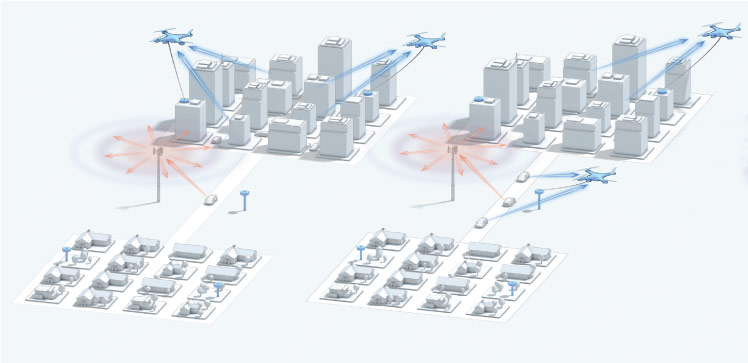Electrical Engineering
Airborne antennas to address EMF concerns
Movable airborne antennas receiving cellphone signals could reduce EMF exposure while offering higher data transmission speed and using less power.

Mobile tethered drones might offer a speedy and environmentally friendly alternative for receiving terrestrial base stations while alleviating public concerns about exposure to electromagnetic fields (EMF).
A solution has been proposed by masters student Zhengying Lou, postdoctoral fellow Ahmed Elzanaty and distinguished professor Mohamed-Slim Alouini of KAUST to address the widespread public concern about EMF exposure from mobile networks.
“It is mainly a problem of perception,” says Elzanaty, “but this concern has led to attempts to destroy signaling towers, especially those associated with the 5G network.” He does point out, however, that recent experiments on animals link some adverse health impacts with long-term exposure to EMF, although at higher intensities than those produced by cellphone networks. Given the widespread public concern, tackling this issue might be commercially and reputationally advantageous for mobile signal providers.
Elzanaty says that although most public concern focuses on exposure to EMF from network base stations — the towers located on high buildings and dotted across the rural landscape — the EMF exposure due to the radiation from mobile phones can be much higher than that from base stations. The team proposes that their tethered unmanned aerial vehicles (TUAVs) would act only to receive these signals, reducing users’ uplink exposure (the exposure from the mobile-to-base station).
They suggest a network of ground stations on the top of buildings in urban environments, providing both power and broadband data links to the TUAVs. The ability to move the TUAVs on demand would allow them to reduce the required power from mobile phones by being closer to these phones and also to adjust their position during the day to match the changing patterns of user movement. The regions covered by cellphone signals can vary significantly at different times of the day as commuters surge into city centers and return to their homes in the evening.
The KAUST team has developed a sophisticated computational algorithm to optimize the changing locations of the proposed antennas.
“Although the TUAVs would be closer to the users than the base stations, they would employ existing technology of low power ‘green antennas’ that only receive signals and so do not radiate any EMF,” Lou emphasizes. The system also offers significantly increased data transfer speeds.
The team has already applied for a U.S. patent for their proposal and its computer control algorithm. They believe it could have significant commercial potential.
“While research into possible risks of EMF exposure continues, our novel airborne green antennas-based architecture could allow the race towards new 6G mobile systems to continue while decreasing the exposure to EMF,” Elzanaty concludes.
References
-
Lou, Z., Elzanaty, A. & Alouini, M.-S. Green tethered UAVs for EMF-aware cellular networks. IEEE Transactions on Green Communications and Networking online 3 August 2021.| article
You might also like

Bioengineering
Smart patch detects allergies before symptoms strike

Computer Science
Green quantum computing takes to the skies

Electrical Engineering
Micro-LEDs boost random number generation

Bioengineering
Sensing stress to keep plants safe

Computer Science
Sweat-sniffing sensor could make workouts smarter

Electrical Engineering
New tech detects dehydration by touching a screen

Electrical Engineering
A new interface for efficient electronics

Electrical Engineering




